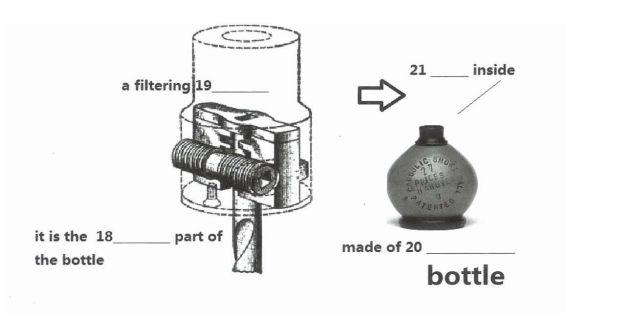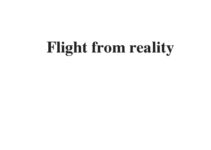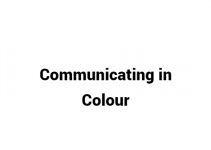Table of Contents
Passage
A The Carbolic Smoke Ball Company made a product called the “smoke ball”. It claimed to be a cure fo influenza and a number of other diseases, in the context of the 1889-1899 (flu pandemic estimated to have killed 1 million people). The bottle was a patented design and the nozzle pari was mental one with the gauze inside which filter the air flux. The smoke ball was a rubber ball with a tube attached. It was filled with carbolic acid (or phenol). The tube would be inserted into a user’s nose and squeezed at the bottom to release medicine powder (the vapours) hold inside the rubber ball bottle. The nose would run, ostensibly flushing out viral infections.
B The Company published advertisements in the Pall Mall Gazette and other newspapers on November 13,1891, claiming that it would pay £100 to anyone who got sick with influenza after using its product according to the instructions set out in the advertisement.
“ £100 reward will be paid by the Carbolic Smoke Ball Company to any person who contracts the increasing epidemic influenza colds, or any disease caused by taking cold, after having used the ball three times daily for two weeks, according to the printed directions supplied with each ball. £1000 is deposited with the Alliance Bank, Regent Street, showing our sincerity in the matter. During the last epidemic of influenza many thousand carbolic smoke balls were sold as preventives against this disease, and in no ascertained case was the disease contracted by those using the carbolic smoke ball. One carbolic smoke ball will last a family several months, making it the cheapest remedy in the world at the price, 10s. post free. The ball can be refilled at a cost of 5s. Address: Carbolic Smoke Ball Company, “27, Princes Street, Hanover Square, London. ”
C Mrs Louisa Elizabeth Carlill saw the advertisement, bought one of the balls and used it three times daily for nearly two months until she contracted the flu on 17 January 1892. She claimed £100 from the Carbolic Smoke Ball Company. They ignored two letters from her husband, a solicitor. On a third request for her reward, they replied with an anonymous letter that if it is used properly the company had complete confidence in the smoke ball’s efficacy, but “to protect themselves against all fraudulent claims” they would need her to come to their office to use the ball each day and be checked by the secretary. Mrs Carlill brought a claim to court. The barristers representing her argued that the advertisement and her reliance on it was a contract between her and the company, and so they ought to pay. The company argued it was not a serious contract.
D The Carbolic Smoke Ball Company, despite being represented by HH Asquith, lost its argument at the Queen’s Bench. It appealed straight away. The Court of Appeal unanimously rejected the company’s arguments and held that there was a fully binding contract for £100 with Mrs Carlill. Among the reasons given by the three judges were (1) that the advert was a unilateral offer to all the world (2) that satisfying conditions for using the smoke ball constituted acceptance of the offer (3) that purchasing or merely using the smoke ball constituted good consideration, because it was a distinct detriment incurred at the behest of the company and, furthermore, more people buying smoke balls by relying on the advert was a clear benefit to Carbolic (4) that the company’s claim that £1000 was deposited at the Alliance Bank showed the serious intention to be legally bound.

E Lord Justice Lindley gave the first judgment, after running through the facts again. He makes short shrift of the insurance and wagering contract arguments that were dealt with in the Queen’s Bench. He believed that the advert was intended to be issued to the public and to be read by the public. How would an ordinary person reading this document construe it? It was intended unquestionably to have some effect. He followed on with essentially five points. First, the advert was not “mere puff” as had been alleged by the company, because the deposit of £1000 in the bank evidenced seriousness. Second, the advertisement was an offer to the world. Third, communication of acceptance is not necessary for a contract when people’s conduct manifests an intention to contract. Fourth, that the vagueness of the advert’s terms was no insurmountable obstacle. And fifth, the nature of Mrs Carlill’s consideration (what she gave in return for the offer) was good, because there is both an advantage in additional sales in reaction to the advertisement and a “distinct inconvenience” that people go to use a smoke ball.

F Lord Justice Bowen LJ’s opinion was more tightly structured in style and is frequently cited. Five main steps in his reasoning can be identified. First, he says that the contract was not too vague to be enforced, because it could be interpreted according to what ordinary people would understand by it. He differed slightly to Lindley LJ on what time period one could contract flu and still have a claim (Lindley LJ said a “reasonable time” after use, while Bowen LJ said “while the smoke ball is used”) but this was not a crucial point, because the fact was the Mrs Carlill got flu while using the smoke ball. Second, like Lindley LJ, Bowen LJ says that the advert was not mere puff because £1000 was deposited in the bank to pay rewards. Third, he said that although there was an offer to the whole world, there was not a contract with the whole world. Therefore, it was not an absurd basis for a contract, because only the people that used it would bind the company. Fourth, he says that communication is not necessary to accept the terms of an offer; conduct is and should be sufficient. Fifth, there was clearly good consideration given by Mrs Carlill because she went to the “inconvenience” of using it, and the company got the benefit of extra sales.
G Carlill is frequently cited as a leading case in the common law of contract, particularly where unilateral contracts are concerned. This is perhaps due to the ingenuity of Counsel for the Defendant in running just about every available defence, requiring the court to deal with these points in turn in the judgment. It provides an excellent study of the basic principles of contract and how they relate to every day life till modern world. The case remains good law. It still binds the lower courts of England and Wales and is cited by judges with approval. However, in addition to the contractual remedy afforded to users, the same facts would give rise to a number of additional statutory remedies and punishments were an individual to place an advert in the same terms today
Questions
Questions 14-17 Do the following statements agree with the claims of the writer in Reading Passage? In boxes 14-17 on your answer sheet write
TRUE if the sataement agrees with the information
FALSE if the statement contradicts the information
NOT GIVEN if there is no information on this
14 Influenza epidemic was more rampant in London city than in rural areas.
15 A letter has replied to Ms. Carlill bearing no signed name to claim the company’s innocent.
16 The Carbolic Smoke Ball Company lost its law suit then the company accepted the sentence straight away.
17 The new patented carbolic acid product can be poisonous and viral infectious.
Questions 18-21 Look at the diagram and fill in the blank with no more than one word
18 The part of the …………………..
19 a filtering ………………….. embedded inside
20 the bottle was made of …………………..
21 the ………………….. form medicine inside the bottle

Questions 22-25 Look at the following statements (Questions 22-25) and the list of people in the box below: Match each statement with the correct person A-E Write the appropriate letter A-E in boxes 22-25 on your answer sheet.
A Lord Justice Lindley
B Lord Justice Bowen
C Mrs. Carlill
D Mr. Carlill (the husband)
22 The person who initiated a law suit against the company.
23 The contract effectiveness can be established because the advert was to be issued to the public including ordinary persons rather than professionals
24 The person who wrote complaints to the company and got no response again.
25 Vagueness of the advert’s terms was no obstacle for people to enforce them.
Questions 26 Choose the correct letter, A, B, C or D. Write your answers in boxes 26 on your answer sheet.
26 Why Carlill is frequently cited as a leading case in the common law of contract
A It was the first and one of he most famous unilateral contract cases to be concerned.
B It helped companies to develop a number of contractual remedy afforded to users,
C The case remains an excellent example that the basic principles and validity of unilateral contract can be established
D An individual to place an advert in the similar terms today can be free of the punishment
Answers



